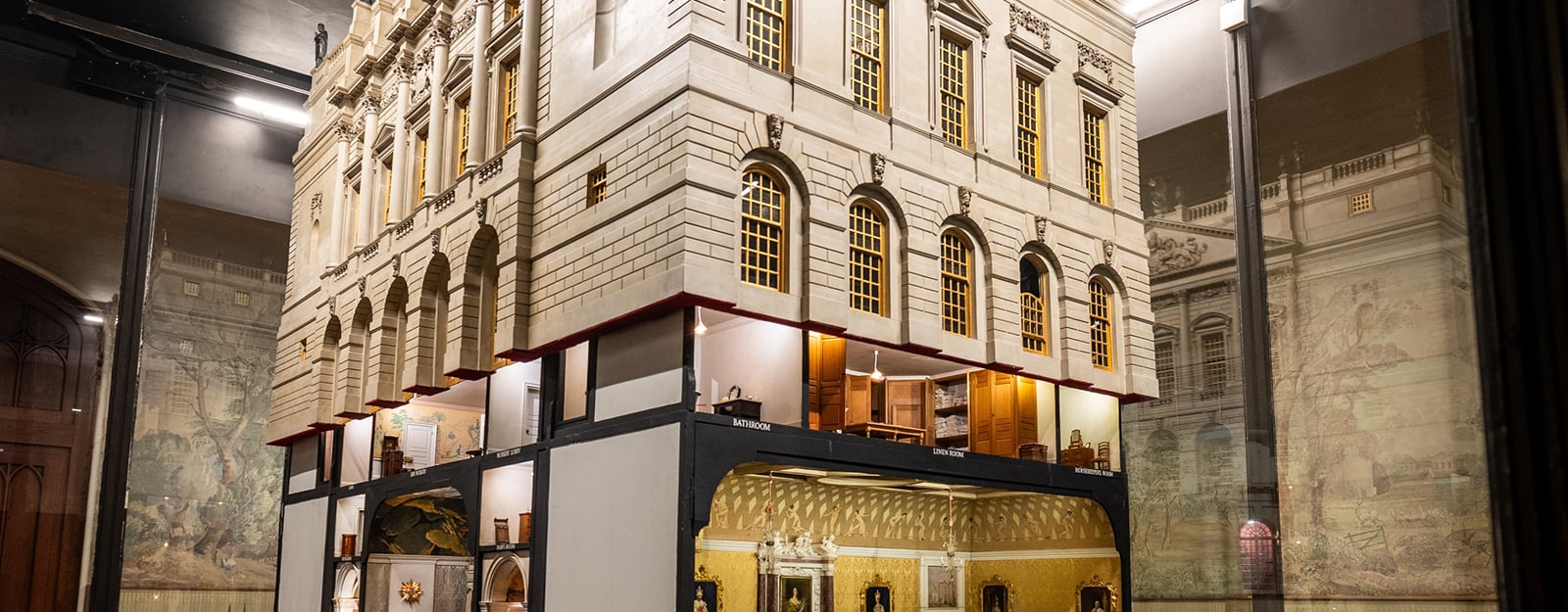
A guide to Windsor Castle's famous Dolls’ House.
Library
In the 1920s, it was not unusual for the library within a household to include a gun room, study and smoking room. The Library in Queen Mary's Dolls' House reflects this trend. The room is paneled in walnut and provides the perfect environment for gaming, writing and reading.
How many London residences, even in Berkeley Square and Park Lane, have a library consisting of two hundred books written in their authors' own hands, and a collection of over seven hundred watercolours by living artists? I doubt even if you could find the counterpart of these in the real Buckingham Palace.
E.V. Lucas, The Book of the Queen's Dolls' House, 1924
Princess Marie Louise and her friend, the author E.V. Lucas, acted as librarians. They took charge of cataloguing and organising the books. The collection was intended to provide a representative, rather than complete, library.
In addition to containing printed reference books and standards of great literature, the princess commissioned books by living authors. She contacted around 200 renowned writers of the day. Most were delighted to contribute, but a few, including Virginia Woolf and George Bernard Shaw, refused. Authors who donated included J.M. Barrie, John Buchan, G.K. Chesterton, Joseph Conrad, Sir Arthur Conan Doyle, John Galsworthy, Robert Graves, Thomas Hardy, Aldous Huxley, Rudyard Kipling, Somerset Maugham, A.A. Milne and Vita Sackville-West.
Buy the book
In celebration of the centenary of Queen Mary’s Dolls’ House, a selection of modern-day writers and binders contributed handwritten and hand-bound books to a new, doll-sized collection.
Library ©
Explore some of the miniature objects below:




